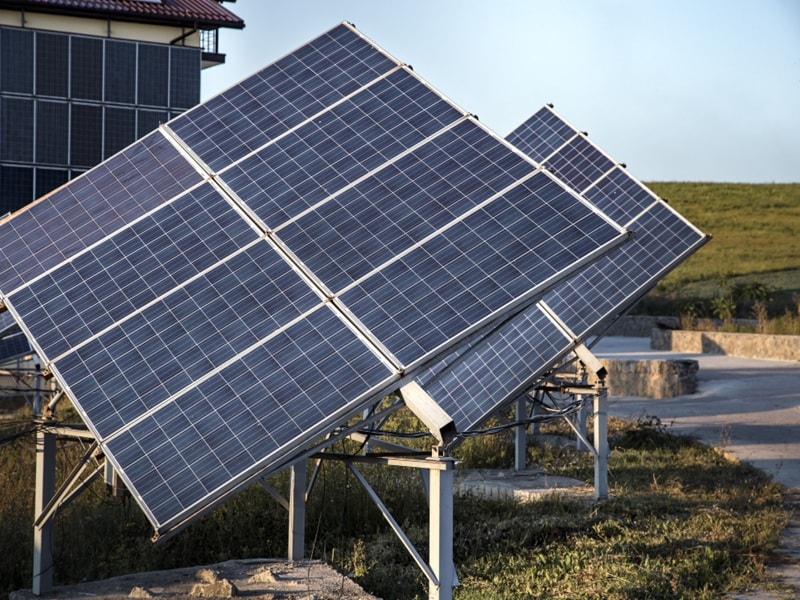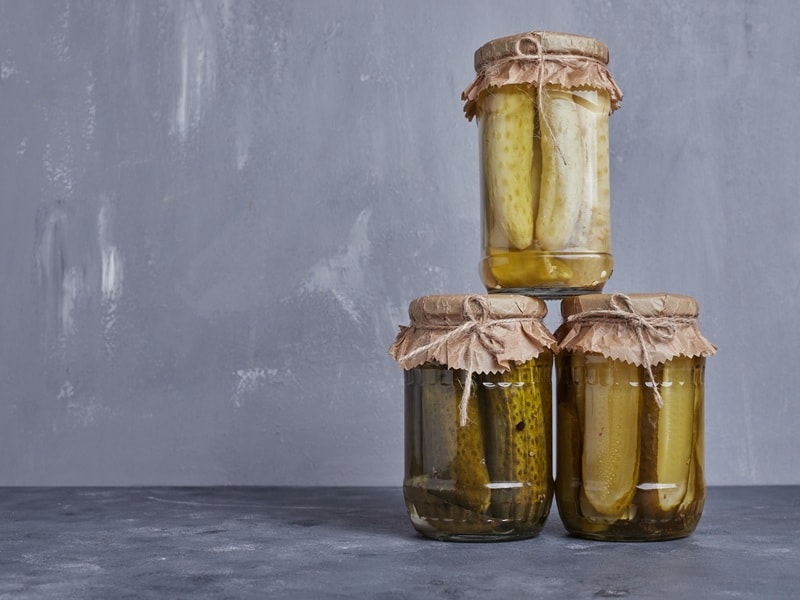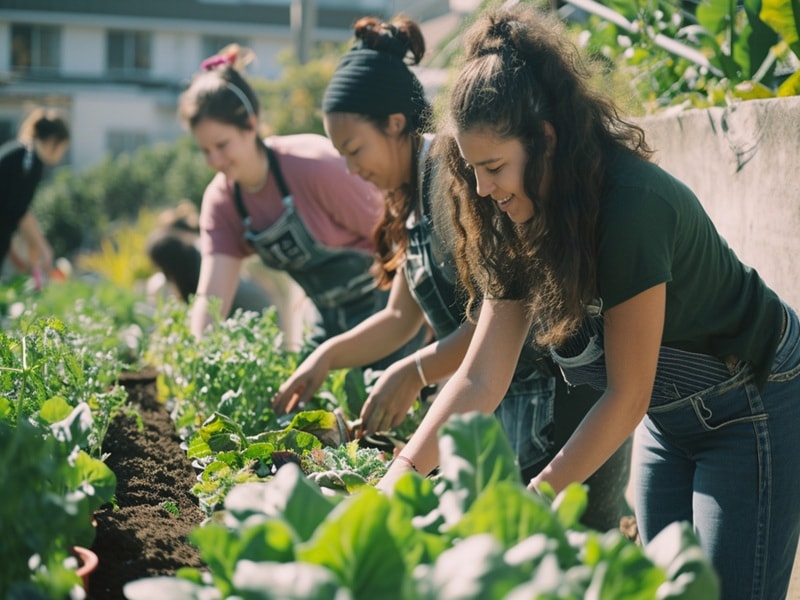Choosing to live in an environmentally friendly way is less about perfection and more about intention, especially in reducing plastic waste. Think of it as a quiet salute to the planet, a way of saying, “I care, and I’ll do what I can.” Even if you’re not swapping your car for a bike or growing your own food, the fact that you’re paying attention already sets you apart.
Most habits that support a sustainable lifestyle are simple tweaks and choices in daily routines. This guide will be your starting point with tons of practical tips on how to be eco-friendly. Let’s get to it.
What Does It Mean to Live an Eco-Friendly Life?
Living a sustainable living means making choices that are gentler on the environment and help to minimise waste. You see the price of convenience—the secret burden behind the products we rely on daily, and promise to do better. For example,
It takes 2700 liters of water to produce one cotton t-shirt—enough to sustain a person for over two years.
And that’s just one shirt! Now multiply that by the contents of your closet.
Similarly, every plastic waste, every extra light left on, every wasted meal pulls energy, materials, and water from somewhere, then leaves behind emissions, waste, and pollution that have to go somewhere else. Living sustainably and focusing on energy efficiency means seeing that full cycle and choosing differently. That’s how to be eco-friendly in real terms.

But does it really matter? When corporations and governments aren’t pulling their weight, the world’s top 1% are flying private jets and docking yachts, having higher carbon footprint per hour than entire city blocks do in a week, it’s tempting to check out and say, “Why should I bother?”
Here’s why:
- You can’t control them. But you can control you.
- You can influence your circle against environmental harm, and your circle influences theirs.
- Systemic change needs fuel—and individual action is that spark.
And beyond the planet, sustainable living benefits you:
- Healthier habits: You get cleaner air, fresher food, and fewer toxins in your home.
- Financial savings: You will save on bills, have smarter consumption, and fewer impulse buys.
- Mental clarity: You’ll enjoy a eco friendly living, rooted in intention, not cluttered by excess.
Easy Tips for Leading an Eco-Friendly Lifestyle
You don’t need a radical overhaul to live greener. It starts with small shifts in everyday life, like these simple swaps and habits.
Reduce, Reuse, Recycle
No matter how sustainable, every product uses water, electricity, raw materials, and packaging before it even gets to you. An eco-friendly lifestyle starts with first reducing what you consume, and being responsible when you consume.
1. Reduce first:
- Don’t buy for “just in case” or because it’s on sale—buy only what you truly need.
- Avoid heavily packaged items. If something is wrapped in plastic packaging, inside a box, inside another bag—it’s waste, not protection.
- Before hitting “Buy Now,” ask: Do I need this? Will I still use it next year?
2. Reuse what you have:
- Borrow, fix, or buy secondhand instead of replacing.
- Don’t just throw wearable clothes, shoes or home items, instead donate if you have to.
- Turn old T-shirts into rags, glass jars into storage, and shipping boxes into organizers.
3. Recycle last:
- Discard items in recycling bins with proper sorting.
- If the service isn’t available, make an effort to find alternatives where your used items go to a recycling facility.
Switch to Reusable Items
Single-use items are waste by design—they’re made to be thrown out, and the damage starts long before that. Take plastic bags:
“It takes one second to produce a plastic bag, 15 minutes to use it, and up to 500 years to break it down.
A jute/cloth bag, by contrast, replaces over 1,000 plastic ones over its lifetime.

So, make reusables your default:
- Keep a canvas tote bag from a trusted eco-friendly tote bag manufacturer, in your car.
- Carry a stainless-steel water bottle—one bottle saves 300+ plastics bottles a year.
- Swap paper towels for washable cloths, and single-use cutlery for travel-friendly metal sets.
Similar everyday swaps will prevent dozens—sometimes hundreds—of disposables and over time you’ll also saves money.
Eco-Friendly Cleaning
Most commercial cleaners are packed with harmful chemicals that pollute waterways and damage ecosystems. Shifting to eco-friendly cleaning products eliminates this at the source.
- Switch to biodegradable soaps and dish liquids—brands like Ecover or Dr. Bronner’s are easy first steps into an eco-friendly lifestyle.
- Then make your own cleaners:
- Equal parts white vinegar and water, plus lemon essential oil for scent, use for glass and window cleaning.
- 2 cups water, ½ cup vinegar, 1 tsp baking soda, and a few drops of tea tree oil as an all-purpose cleaner.
- Sprinkle baking soda on greasy pans, then scrub with half a lemon.
Use cotton drawstring bags for storing garments and laundry—many sustainable bag factories now offer these in bulk and custom sizes. Avoid antibacterial sprays unless truly needed—they disrupt more than they protect. You’ll reduce chemical exposure, save money, and cut down on plastic bottles.
Energy-Efficient Choices
Every wasted watt equals higher emissions and bigger bills. Efficient choices shrink both.
LED bulbs use up to 75% less energy and last 25 times longer than incandescent ones.
- When upgrading, choose energy efficient appliances with the ENERGY STAR label.
- Invest in solar panels.
- Unplug devices or use smart power strips to eliminate “phantom power” draw from idle electronics.
- Seal up gaps around windows and doors to save energy.
- Use fans instead of AC when possible, and thick curtains to insulate during winter.

Water Conservation
Only 1% of the planet’s water is potable, yet millions of gallons of tap water go down the drain each day. So, conserve water deliberately:
A leaking tap alone will waste more than 3,000 gallons of pure water per year.
Shutting the tap water while brushing your teeth will save up to 4 gallons a day.
- Use low-flow faucets and dual-flush toilets.
- Harvest rainwater in barrels for garden plants.
- Water the garden in the morning or evening to decrease evaporation and use mulch.
- Limit showers in everyday life.
- And when washing your vehicle, use cold water and use a bucket.
Eco-Friendly Living in the Home
Your home is where your routine develops. Even small, regular changes here can have a significant ripple effect.
Sustainable Home Decor
From production to processing, fast furniture and trendy decor involve synthetic materials, energy-heavy processes, and often, exploitative labor. And eventually end up in landfills in a few years. Steer clear of the trends and choose environmentally friendly, natural materials for decorating your home.

- Opt for reclaimed wood, bamboo, rattan, cork, or organic cotton to reduce your carbon footprint.
- Upcycle—repurpose crates as coffee tables, glass containers as planters, and ladders as bookshelves.
- Eschew plastic-rich or disposable ornamentation.
- Select classic pieces over fad pieces—they endure longer and decrease overconsumption.
- Hunt secondhand resources such as Facebook Marketplace, thrift stores, flea markets, Craigslist, or Buy Nothing groups to breathe new life into furniture and minimise waste.
Composting
30% of household trash consists of food scraps, coffee filters, and yard clippings—all material that can be composted rather than placed in landfills, where they release methane, a 25x more powerful greenhouse gas than CO₂.

Composting will not just cut down this food waste but also provide you with nutrient-rich soil to have a thriving home garden.
- For tiny areas or city locations, utilize Bokashi bins (that utilize microbes to break down food residue) or electric composters such as Lomi.
- For outdoor installations, simple backyard compost bins or worm composting (vermiculture) are adequate.
Eco-Friendly Cooking
Just using lids while cooking can save heat loss by up to 30%.
And
Switching fossil fuel to induction cooking stoves could save energy by up to 60% because they heat directly magnetically, losing less heat. They are also safer and healthier for indoor air.
Other than that:
- Embrace planet plant-based diet with local and seasonal vegetable and fruits.
- Contact a bag supplier and get food bags to freeze meals and reduce appliance use and food waste with batch cooking.
- Match pot to burner to avoid wasting up to 40% of the heat.
- Try pressure cookers or slow cookers—they have better energy efficiency.
- Grow edible plants like herbs and greens at home.
- Compost scraps like veggie peels and coffee grounds.
Eco-Friendly Storage
Most food storage setups are full of plastic, easily replaced with better alternatives.
- Switch to glass containers for dry goods, spices, and sauces.
- Get recyclable food containers or bulk food bags for meals and leftovers.
- Opt for beeswax wraps or compostable parchment replace cling film.
- Repurpose what you already have—yogurt tubs, takeaway containers, shoeboxes—before buying new.
- Get custom jewelry bags or garment bags from a wholesale bag supplier to reduce non-degradable storage waste.

Sustainable Transportation Choices
Vehicle emission is a leading cause of air pollution, smog, and respiratory issues. But it’s also an area where individual choices can have the most impact in addressing the climate crisis.
Walking, Biking, and Carpooling
Transportation is responsible for more than 25% of worldwide carbon dioxide and other greenhouse gas emissions.
If your destination is under two miles, walking or biking is usually faster than you’d expect. It also cuts out emissions entirely and boosts your health. Biking just four miles instead of driving avoids around 15 pounds of CO₂ emissions each trip, helping combat climate change .
- Invest in a quality backpack or pannier to carry items more comfortably.
- Check out a local cycling group or app such as Strava to encourage public transportation habit and network.
- For longer journeys, organize a carpool schedule with colleagues or neighbors. Utilize apps such as BlaBlaCar, Waze Carpool, or company office software.
Sharing a ride with only one other reduces your carbon footprint by 50%—and with three, down by two-thirds.

Public Transit and Electric Vehicles
The U.S. Department of Transportation says riding public transport can cut your emissions by 45% compared to driving alone.
Get a transit app (such as Citymapper or Moovit) to map out routes and monitor arrivals.
- Use transit app (like Citymapper or Moovit) to plan routes and track arrivals.
- Keep a pre-loaded transit card or mobile wallet ready—this makes public transport frictionless.
Try one full week per month using only public transportation—see how your routine adjusts.
- If driving is necessary, explore electric car options.
Even when powered by fossil-fuel grids, electric cars generate 30–70% fewer emissions over their lifespan than gas cars.
Car-Free Days
Skipping just one 20-mile car trip per week saves about 1,000 pounds of CO₂ annually. Along with reducing your carbon footprint, it also gives you a chance to explore alternatives that might become new habits.
So pick a day of the week when you’ll skip driving. Use that day to try something new—join a community supported agriculture garden, attend a nearby event, or simply rest at home. If traveling is necessary, try using a mix of bike-sharing services, walking to public transport.

Work From Home and Combine Errands
If your job allows remote work, even one or two days from home a week can reduce thousands of commuter miles each year and carbon emission.
For someone with a 30-minute drive each way, that’s over 2,000 miles—and 1,600+ pounds of carbon dioxide—avoided annually.
And when you do go out, combine errands into one trip. Need groceries, dry cleaning, and a pharmacy run? Plan them together instead of spreading them out across the week.
Cold engines burn more fuel, so consolidated trips aren’t just efficient—they burn less gas, have lower carbon footprint, and save time.
Sustainable Shopping and Eating Habits
The international supply chains behind packaging, food, and clothes are huge polluters. Here are a few more sustainable living tips to shift shopping and eating habits.
Eco-Friendly Fashion
Did you know that the fashion industry creates roughly 10% of the world’s carbon emissions and 20% of the world’s wastewater? That’s greater than all international flights and ships combined.
The problem starts with overproduction and fast fashion—cheap clothes made fast, worn a few times, and tossed. For a more sustainable lifestyle, avoid brands that push frequent collections and low-quality materials. Instead:
- Buy less but better—choose long-lasting natural materials such as organic cotton, linen, and hemp.
- Second-hand shop by way of thrift shops, online platforms, or local clothing swaps.
- Steer clear of handbags made from plastic and synthetic accessories, which release microplastics and harmful chemicals. Opt for leather alternatives such as Piñatex or jute bags for shopping from eco friendly vendors.
- For kids, consider baby clothing libraries or swap groups—they grow out of things too fast to justify constant buying.
Local and Organic Foods
Locally produced food travels shorter distances, so there are fewer carbon emissions of fuel. And if it’s organic, you’ll also avoid pesticides and fertilizers, preserving water and soil in healthier states.

- Join a CSA (Community Supported Agriculture) program to receive fresh local produce of fruits and vegetables weekly.
- Shop perishable food items fresh, at a certified farmer’s market.
- Grow your own herbs or vegetables, even a small balcony garden or a hydroponic setup is the good starting point.
- Eat what’s in season; it’s less expensive, fresher, and doesn’t come traveled halfway around the world.
Eco-Friendy Packaging
Packaging contributes to almost one-third of all household waste worldwide, and much of it isn’t even recyclable.
To cut that down:
- Obtain reusable shopping bag from cloth or jute bag company, for shopping.
- Purchase in bulk and portion out.
- Support businesses that use biodegradable, recyclable, or compostable poly mailer packaging or recycled paper.
How to Encourage Others to Adopt Eco-Friendly Habits
Let’s be real—no one enjoys a lecture. If you can get others to care about climate change, the secret isn’t coercion, it’s connection. People are drawn to what feels tangible, achievable, and gratifying. Here’s how to make your sustainable living habits contagious:
A- Make it relatable
Instead of telling them, “Plastic packaging is killing the planet,” say something like, “I switched to a reusable cup that fits in my bag—now I can carry my morning coffee anywhere, it stays warm, and looks cool too.” Personal wins land better than guilt trips.
B- Share your experiments
For example: “I’ve been composting food scraps in a compost bin under my sink. I thought it would stink, but since I manage moisture and avoid too many wet peels, it’s actually fine. I’ve even started using the compost in my herb pots.” Sharing your trial-and-error makes it real and less intimidating.
C- Celebrate small wins
“My coworker saw my lunch in a glass container and asked where I got it. Next week, she brought hers too!” Normalize tiny steps—they stack up.
D- Don’t force, just invite
Host a low-waste dinner or DIY swap night. Gift eco-friendly things you love. Let people see that green choices can be fun, not restrictive.
E- Support real eco-conscious brands
Watch out for “greenwashing”—when businesses flaunt unproven buzzwords such as “natural resources” or “eco-friendly” with no actual accountability. Dig around, read labels, and in case of doubt, support manufacturers and suppliers with open supply chains and sustainability reports.
Support labels such as B Corp, USDA Organic, Rainforest Alliance, or Fair Trade to ensure the brands actually environmentally friendly.
Frequently Asked Questions (FAQs)
What are the best easy, eco-friendly tips for beginners?
As a beginner, start by substituting single-use items with reusable alternatives. Such as keeping a reusable water bottle, bringing a tote bag for shopping, and BYO utensils for takeout. Also, swap all bulbs with LEDs, and reduce food waste by planning your meals.
How can I reduce my carbon footprint at home?
To lower your carbon footprint, minimize your energy consumption. This could mean keeping the thermostat a few degrees lower, sealing your leaky windows, and unplugging your phone charger and other devices with rechargeable batteries. If you do laundry, use cold water and air dry when applicable. If available with your energy company, sign up for renewable energy plans.
Where can I find eco bags in bulk?
You can find eco bags in bulk from reputable eco-friendly bag manufacturers and suppliers in China, offering custom designs, wholesale pricing, and a variety of sustainable materials like jute, cotton, and biodegradable fabrics. Many factories also provide bulk order options for businesses, events, or retailers looking to promote green living through practical, reusable products.
What are some eco-friendly alternatives to plastic?
A common harmful item we use is plastic bags; replace them with any reusable cotton, canvas, or jute bag. In the kitchen, use beeswax wraps instead of plastic wrapping paper, and Tupperware instead of glass jars. Also buy bar soaps, bamboo toothbrushes, and wooden or metal kitchenware whenever you can.
How can I make my daily commute more eco-friendly?
First, drive as little as possible in your own vehicle. Instead, cluster your errands, take public transport, or switch to biking or walking for short trips. In addition, ride-share with workmates or neighbors as much as possible. If you need to buy a new vehicle, think about switching to an electric car, which use cleaner fuel.
Can I live a sustainable life without making drastic changes?
You don’t have to become monastic for sustainable living. Begin with practical changes such as adopting plant based diet, staying away from single-use plastics, and buying local products. Start with habits that you can maintain and work your way up.
Conclusion
An environmentally friendly lifestyle begins with small, intentional decisions: such as adopting renewable energy sources, eating more locally, reducing food waste, and using energy efficient electronic devices. When these become habits, they ripple outward into your community, your workplace, and your way of life.
Want to extend your impact with business? Check out TENDEE—your certified eco-friendly bags and packaging manufacturer and supplier. From tote bags and biodegradable mailers to event promotional bags and laundry bags, each product is held to the highest environmental standards.
Reach out to schedule a business consultation or download our product catalog to continue toward eco friendly wholesale bag collection.





